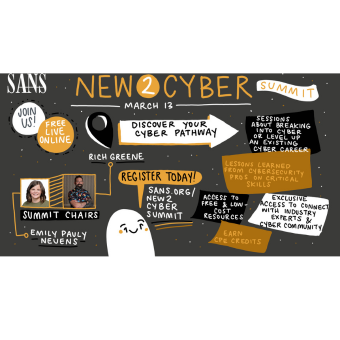For the past twenty years, we in the security industry have focused on how to use technology to secure technology, and we are getting pretty good at it. Unfortunately, organizations have often ignored the human factor in cybersecurity. As a result, cyber attackers have simply shifted their attack vector from targeting technology to targeting people. The three most common ways cyber attackers target people is what many call “the three *ishings: phishing, smishing, and vishing. In this blog series, we will cover in more detail what these three methods are, cyber attackers’ tactics and techniques, and what you can do about it.
Read Parts 1 and 2 of this blog series here:
Today we will cover the question: What is Vishing?
What is Vishing?
Vishing is like phishing, but instead of sending emails trying to trick people, cyber criminals call people on the phone and either talk to them live or leave a voice message. The term vishing is a combination of the words voice and phishing. You may have noticed a rise in random voicemail messages and phone calls trying to get you to give up your password or pay a fine with your credit card.
Why? It is much harder for organizations to secure peoples’ phones. Quite often, security teams have neither the visibility nor control of personal mobile devices like they do for workstations. This means it’s both harder to secure and monitor mobile devices.
There are far fewer security controls that can effectively identify and filter vishing phone call attacks. This means when a cyber attacker calls victims, that phone call is far more likely to reach its intended victim.
Cyber attackers can create a far greater sense of trust and/or urgency with their victim over the phone than they can over email or text. Once they have you on the phone, they are not going to let you go until they get what they want. While these calls can be more work for the attacker, they tend to be far more effective and profitable.
Common Vishing Attacks
So, what are the different types of vishing attacks? While they are constantly evolving, here are the most common.
Tech Support Call
In this case, the individual calls you on the phone and talks to you live. An example is when a cyber attacker calls you pretending to be from your company’s IT team needing your password to reset your account. That’s really not your IT team, it’s a cyber attacker trying to literally talk you out of your password.
Government Agencies Call
Another example is when you get a phone call from someone explaining they are from the government and your taxes are overdue and if you don’t pay them right away, you will go to jail. In this case they are trying to get your credit card and money.
In both the tech support and government agencies scenarios, the cyber attackers sound extremely convincing.
Tech Support Callback
Another approach is when cyber attackers trick you into calling them. Many people set their phones to not accept calls from unknown phone numbers, so it’s more effective to have potential victims make the call. In addition, when the victim initiates the phone call, they already have some trust built into the scenario and are by default more likely to fall victim. By having the victim call them, the cyber attacker saves time by not having to weed out who is and is not likely to fall victim.
The most common ways to get people to call are by either sending them a text message or an email tricking them into calling. The screenshot below shows a phishing email that is trying to get the recipient to call the phone number. Once they cyber attackers get the victim on the phone, they will be tricked out of their PayPal password.
.png)
Automated Calls
This is when cyber attackers make automated calls that attempt to interact with people or leave voicemail messages. These scams tend to be a bit more simplistic, advertising things like expired warranties, approved refunds, undelivered packages, or suspicious charges. Automated phone calls are like generic phishing emails. The attack is very broad, often targeting millions of people.
.png)
What To Do About Vishing Attacks
While many security training programs focus on phishing, far too often we neglect voice-based vishing attacks. In fact, this can create a situation where your workforce is highly aware of phishing attacks but may mistakenly think that cyber attackers only use email for attacks. From a training perspective, we do not recommend you try to teach people about every different type of vishing attack. Not only is this most likely overwhelming your workforce, but cyber attackers are constantly changing their lures and techniques. Instead, focus on the most common indicators and clues of a vishing attack. This way your workforce will be trained and enabled regardless of the method or lures cyber attackers use. In fact, the indicators below work not only for vishing, but are the same indicators of an email phishing or text based smishing attack.
Urgency: Any call that creates a tremendous sense of urgency, trying to rush the victim into making a mistake. An example is a call from the government stating your taxes are overdue and if you don’t pay right away you will end up in jail. The government will never call you with tax issues, they send a document to your mailing address.
Pressure: Any call that pressures you to ignore or bypass company policies and procedures. For example, someone calling you pretending to be from IT pressuring you to give up your password so they can reset a system.
Curiosity: Any call that generates a tremendous amount of curiosity or sounds too good to be true, such as a voice message explaining you have an undelivered UPS package or are receiving an Amazon refund.
Tone: Any call that sounds like it is coming from a coworker or friend, but the wording does not sound like them, or the overall tone is wrong.
Vishing is quickly becoming one of the primary attack methods of cyber attackers today simply because it’s easy to do and it works. By teaching your workforce what vishing is and the most common indicators you dramatically reduce the risk of a vishing incident.
Are you overwhelmed trying to engage, train, and secure your workforce? Is no one listening to you? Do you lack the resources to succeed, or are you not sure where you should focus next in your security awareness program? SANS LDR433: Managing Human Risk is an intense three-day course that provides you the roadmap, skills, and lessons learned on how organizations effectively engage and secure their workforce. The course includes seven interactive team labs, the Human Risk Roadmap, access to the course digital download package, and prepares you for the SANS Security Awareness Professional (SSAP) certification. I hope to see you in class!





